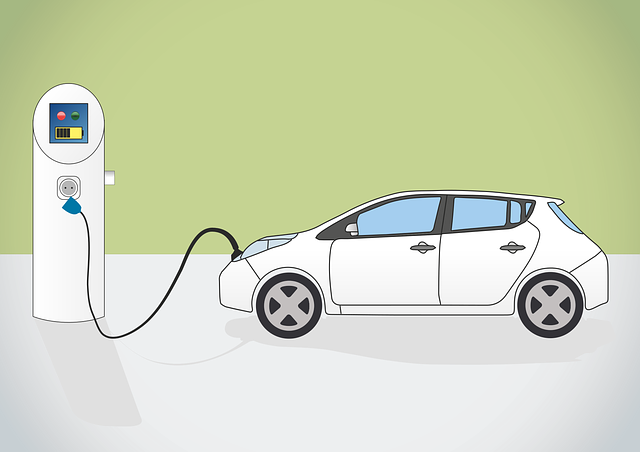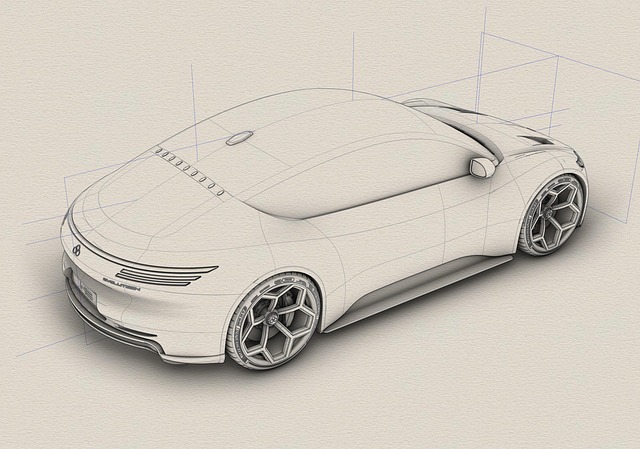Adopting low-emission Select Electric Vehicles (SEVs) offers substantial environmental and economic benefits, including reduced greenhouse gas emissions, improved public health, energy independence, and lower operating costs. Advancements in technology have made SEVs more accessible, rugged, and diverse in model offerings. Governments worldwide are incentivizing EV adoption through tax breaks and investments in charging infrastructure, while public transportation and sustainable commercial rentals further reduce urban emissions. The future of transportation leans green with rapidly growing EV markets and improved practicality.
In today’s eco-conscious world, transitioning to low-emission transportation alternatives is paramount. This article explores the multifaceted benefits of embracing sustainable mobility options, with a particular focus on select electric vehicles (EVs). We delve into popular EV models, the expanding charging infrastructure, government incentives, and the pivotal role of public transit in reducing emissions. Additionally, we look ahead to future trends shaping a more sustainable and greener transportation landscape.
- Understanding Low-Emission Transportation Benefits
- Exploring Popular Electric Vehicle Options
- Charging Infrastructure: A Growing Network
- Government Incentives for Eco-Friendly Transport
- Public Transit's Role in Reducing Emissions
- Future Trends Shaping Sustainable Mobility
Understanding Low-Emission Transportation Benefits

Adopting low-emission transportation alternatives offers a multitude of benefits for both individuals and the planet. By selecting electric vehicles (EVs), we can significantly reduce greenhouse gas emissions, contributing to climate change mitigation. EVs produce zero tailpipe pollutants, leading to cleaner air and improved public health, especially in urban areas heavily congested with traffic. Moreover, these vehicles promote energy independence by reducing reliance on fossil fuels, enhancing national security and ensuring a more sustainable future.
When considering long distance electric car recommendations or sustainable heavy-duty truck alternatives, the latest EV models and innovative technologies offer promising solutions. For off-roading enthusiasts seeking the best EV for off-roading, advancements in battery technology and ruggedized designs are transforming traditional perceptions. These vehicles are not just for city driving anymore; they are capable of tackling diverse terrains while minimizing environmental impact.
Exploring Popular Electric Vehicle Options

In recent years, the automotive industry has witnessed a significant shift towards sustainable transportation with the rise of electric vehicles (EVs). When exploring popular select electric vehicles, consumers have a growing array of options to choose from, each offering unique features and environmental benefits. These range from compact cars ideal for urban commuting to spacious SUVs suitable for longer journeys, ensuring there’s an EV to cater to every need.
One of the key advantages of EVs is their role in promoting green vehicle incentives and rebates, which make them more affordable for buyers. Additionally, they provide an eco-friendly alternative for sustainable transportation for long trips, offering reduced emissions and improved fuel efficiency compared to traditional gasoline-powered vehicles. For daily use, energy efficient vehicles like these prove to be not just environmentally conscious choices but also economically sensible options due to lower operating costs and potential tax benefits.
Charging Infrastructure: A Growing Network

The rise of low-emission transportation has sparked a significant development in charging infrastructure, creating a robust network that supports the growing popularity of Select Electric Vehicles (SEVs). This expansion is particularly notable in urban areas, where advanced driver assistance systems (ADAS) in electric cars are becoming increasingly sophisticated, offering drivers enhanced safety and convenience. The widespread adoption of SEVs has spurred governments and private entities to invest heavily in charging stations, making eco-friendly alternatives to gas-powered vehicles more accessible and attractive to consumers.
With an emphasis on energy efficiency, daily commuters now have a variety of options among the latest energy efficient vehicles. This trend is reshaping the transportation landscape, encouraging innovation in both vehicle technology and supporting infrastructure. As the network continues to grow, so does the convenience and appeal of electric cars with ADAS for everyday travel, marking a significant step towards a greener future.
Government Incentives for Eco-Friendly Transport

Governments worldwide are increasingly recognizing the need to reduce carbon emissions from transportation sectors, leading to various incentives for promoting eco-friendly alternatives. One prominent strategy is offering tax breaks and subsidies to encourage consumers to select electric vehicles (EVs) over traditional gasoline-powered cars. These financial benefits make EVs more affordable, offsetting their initial higher cost. Many countries also provide grants or low-interest loans for purchasing energy-efficient vehicles for daily use, further stimulating the shift towards sustainable transportation.
Moreover, governments are investing in infrastructure to support rapid charging electric cars, addressing a key barrier to EV adoption. The deployment of green fleet management software solutions enables efficient tracking and maintenance of public and private vehicle fleets, promoting their environmental benefits. These incentives and infrastructural developments collectively play a pivotal role in shaping a greener transportation landscape.
Public Transit's Role in Reducing Emissions

Public transit plays a pivotal role in reducing emissions by offering an efficient and sustainable alternative to individual car usage. By encouraging mass travel, public transportation networks can significantly decrease congestion on roads, which in turn lowers fuel consumption and emits fewer pollutants. Moreover, the electrification of public transportation is gaining momentum, with many cities embracing popular electric vehicle makes and models to power their buses, trains, and trams. This shift towards electrifying public transportation networks promises substantial environmental benefits by replacing fossil fuels with clean energy sources.
In addition to city-run public transit, sustainable commercial vehicle rentals are also contributing to the green revolution in urban mobility. Businesses are increasingly opting for eco-friendly vehicles for their last-mile deliveries and services, further reducing emissions from commercial fleets. This multifaceted approach ensures that as cities grow, they do so in a way that is environmentally conscious, promoting cleaner air and a more sustainable future for all.
Future Trends Shaping Sustainable Mobility

The future of transportation is becoming increasingly focused on sustainability, and the trends shaping this shift are compelling. One of the most significant drivers is the growing adoption of electric vehicles (EVs). The market for EVs has seen exponential growth in recent years, driven by advancements in battery technology that have led to longer ranges and more efficient charging times. For instance, rapid charging electric cars can now reach 80% battery capacity in under an hour, making them a viable alternative for daily commutes.
As the world moves towards reducing greenhouse gas emissions, the shift to EVs is not just an environmental imperative but also an economic one. Consumers are becoming more aware of the long-term savings associated with electric car trade-in values and the decreasing cost of ownership compared to conventional vehicles. Moreover, the development of new charging infrastructure, including widespread access to fast charging stations, addresses range anxiety—a key barrier to EV adoption. With electric cars offering excellent range and performance, the future looks bright for sustainable mobility.
The shift towards low-emission transportation alternatives is not just an environmental necessity, but also a rapidly growing trend. By exploring options like electric vehicles (selecting the best among popular models), enhancing charging infrastructure, and implementing government incentives, we’re witnessing a significant reduction in emissions across sectors. Public transit plays a crucial role in this transformation, while future trends continue to shape sustainable mobility. Embracing these alternatives not only benefits our planet but also contributes to a greener, more efficient transportation landscape.
